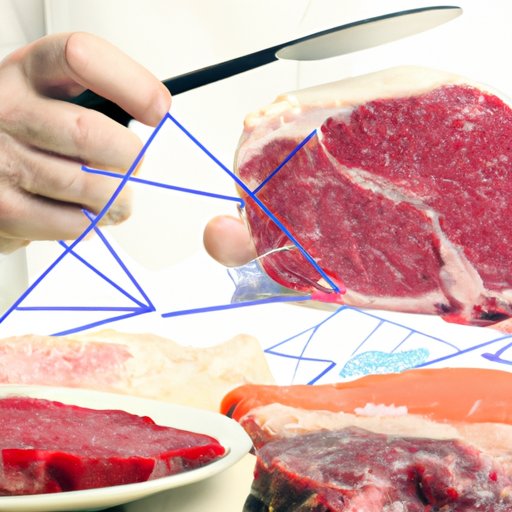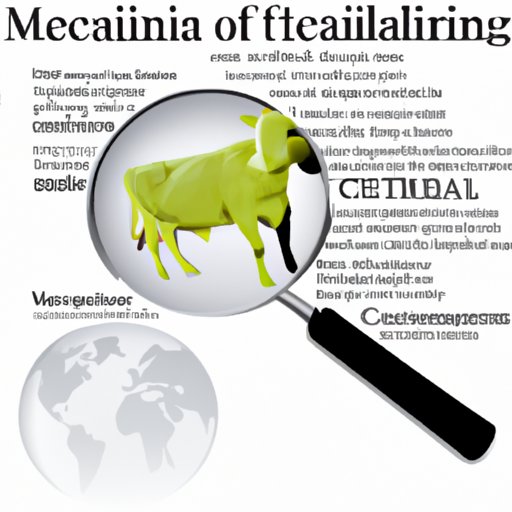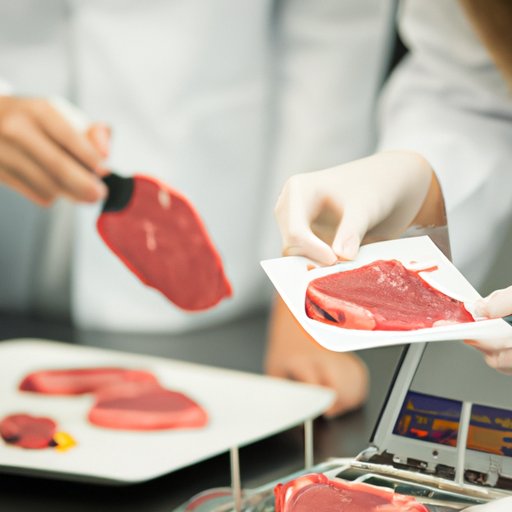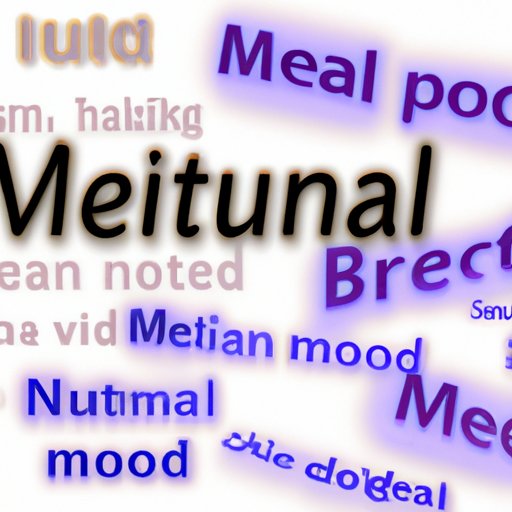Introduction
When it comes to deciding what is the best meat to eat, there’s no one-size-fits-all answer. It depends on a variety of factors, including your nutritional needs, budget, taste preferences, and ethical considerations. In this article, we’ll explore the various types of meat available and discuss the health, cost, and environmental impact of each type.
Comparing the Nutritional Benefits of Different Types of Meat
All types of meat are a good source of protein, B vitamins, minerals, and healthy fats, but the specific nutrients found in each type of meat can vary. For example, according to a study published in the American Journal of Clinical Nutrition, beef is particularly high in zinc and iron, while chicken is rich in selenium and phosphorus. Lamb is higher in vitamin B12 than other meats, and pork is an excellent source of thiamin.
In terms of protein content, most types of meat provide about the same amount of protein per serving, whether it’s beef, pork, poultry, or lamb. According to the Harvard T.H. Chan School of Public Health, a 3-ounce serving of cooked meat contains 21 to 24 grams of protein. The fat content of different types of meat can vary, though. Generally speaking, beef has the highest fat content, followed by pork, poultry, and then lamb.

Examining the Healthiest Cuts of Meat
When it comes to choosing the healthiest cuts of meat, leaner is better. Here’s a look at the leanest cuts of each type of meat:
Beef: The leanest cuts of beef include tenderloin, sirloin, flank steak, and 95% lean ground beef.
Pork: The leanest cuts of pork include pork tenderloin, center loin chops, and 95% lean ground pork.
Poultry: The leanest cuts of poultry include skinless chicken breasts, turkey cutlets, and ground turkey breast.
Lamb: The leanest cuts of lamb include leg of lamb, lamb loin chops, and ground lamb.
Exploring the Pros & Cons of Eating Red vs. White Meat
Red meat (beef and lamb) and white meat (pork and poultry) have some distinct differences when it comes to nutrition, health, and environmental impact. Here’s a look at the pros and cons of each type of meat.
Pros of Eating Red Meat: Red meat is an excellent source of iron and zinc, which are essential for energy production, immune system health, and wound healing. It also provides a good dose of B vitamins, including niacin, riboflavin, and B12.
Pros of Eating White Meat: White meat is lower in calories and fat than red meat. It’s also a good source of selenium, phosphorus, and thiamin. Plus, it’s easier to digest than red meat.
Cons of Eating Red Meat: Red meat is higher in saturated fat than white meat, and eating too much of it has been linked to an increased risk of heart disease, certain cancers, and other chronic illnesses. Plus, red meat production has a higher environmental impact than white meat production.
Cons of Eating White Meat: White meat is generally lower in iron and zinc than red meat, so if you don’t consume other iron-rich foods, you may be at risk of anemia. Additionally, some types of poultry can contain antibiotics and other chemicals that may be harmful to your health.
Investigating the Environmental Impact of Eating Meat
The environmental impact of meat production is significant. According to the World Watch Institute, livestock production accounts for 14.5 percent of global greenhouse gas emissions, more than all forms of transportation combined. Other environmental impacts include water usage and land usage. Livestock production uses vast amounts of water and large swaths of land, both of which are becoming increasingly scarce resources.

Examining the Ethical Implications of Eating Meat
Eating meat also has ethical implications. Animal welfare concerns are top of mind for many people, as factory farming practices have been linked to animal abuse and neglect. Additionally, human rights concerns have been raised regarding the exploitation of migrant workers and other vulnerable populations involved in the production of meat.
Evaluating the Cost-Effectiveness of Different Types of Meat
When it comes to cost-effectiveness, the price per pound of different types of meat can vary significantly. Generally speaking, beef is the most expensive, followed by pork, poultry, and then lamb. Specialty meats, such as bison and goat, tend to be even more expensive.

Investigating How Cooking Methods Affect the Quality of Meat
The quality of meat can also depend on how it is cooked. Grilling, roasting, smoking, and searing are all popular cooking methods, and each method brings out different flavors and textures. Grilling is a fast and easy way to cook meat, and it produces a nice smoky flavor. Roasting is slower, but it helps to keep the meat juicy. Smoking is another slow cooking method that infuses the meat with a deep, smoky flavor. And searing is a great way to quickly lock in moisture and flavor.
Conclusion
When it comes to deciding what is the best meat to eat, it ultimately depends on your individual needs, preferences, and values. All types of meat can provide important nutrients, but red meat is higher in fat and has a greater environmental impact than white meat. Additionally, ethical considerations should be taken into account when choosing which type of meat to eat. Finally, cost-effectiveness and cooking methods should also be considered when selecting the best type of meat for your diet.
With all these factors in mind, the best type of meat for health, cost, and environmental impact is lean poultry. It’s lower in calories and fat than red meat, and its production has a smaller carbon footprint and requires less water and land usage. Plus, poultry is an excellent source of protein, B vitamins, and minerals. So, if you’re looking for the healthiest, most cost-effective, and environmentally friendly type of meat, poultry is your best bet.
(Note: Is this article not meeting your expectations? Do you have knowledge or insights to share? Unlock new opportunities and expand your reach by joining our authors team. Click Registration to join us and share your expertise with our readers.)
